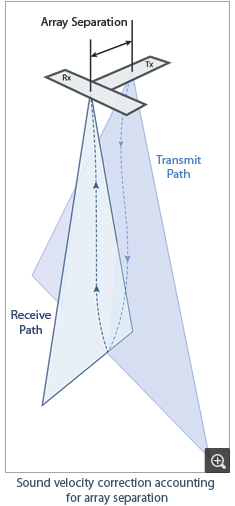News
New Sound Velocity Correction for HIPS and SIPS
 CARIS™ has introduced a new sound velocity correction algorithm to HIPS and SIPS™ that significantly improves results for many mid and deep-water sonars and benefits some shallow water multi-sector systems as well.
CARIS™ has introduced a new sound velocity correction algorithm to HIPS and SIPS™ that significantly improves results for many mid and deep-water sonars and benefits some shallow water multi-sector systems as well.
The new algorithm was based on research from the Ocean Mapping Group of the University of New Brunswick, Canada and now accounts for the separation between transmit and receive arrays when performing ray-tracing. By defining the location of the separate arrays a more robust estimate of the path of each beam to the seafloor and back can be made, taking into account the physical separation between the arrays and the movement of the vessel through the water between transmit and receive.
"Implementing this algorithm is a very important step for CARIS" said Burns Foster, HIPS and SIPS Product Manager, "With an increase in the use of multi sector sonars a more sophisticated method of ray-tracing was needed and this excellent research from the Ocean mapping Group was just what we were looking for."
The new algorithm was initially developed to work with Kongsberg sonar data, but has been successfully implemented for some other common beam forming multibeam systems as well. This enhancement is now available for download from the CARIS Online Customer Services website for free for all users of HIPS and SIPS 9.0 with a valid subscription. Please contact Customer Services [email protected] if you have specific questions about supported systems.
Join our Mailing List
Subscribe to email announcementsOur Latest Tweets
Tweets by Teledyne CARIS Follow us on TwitterConnect With Us

